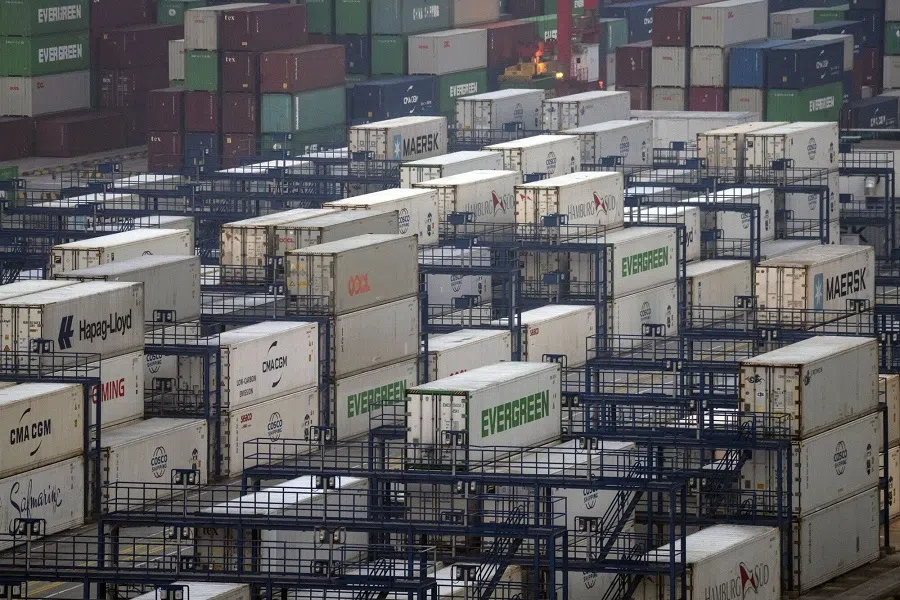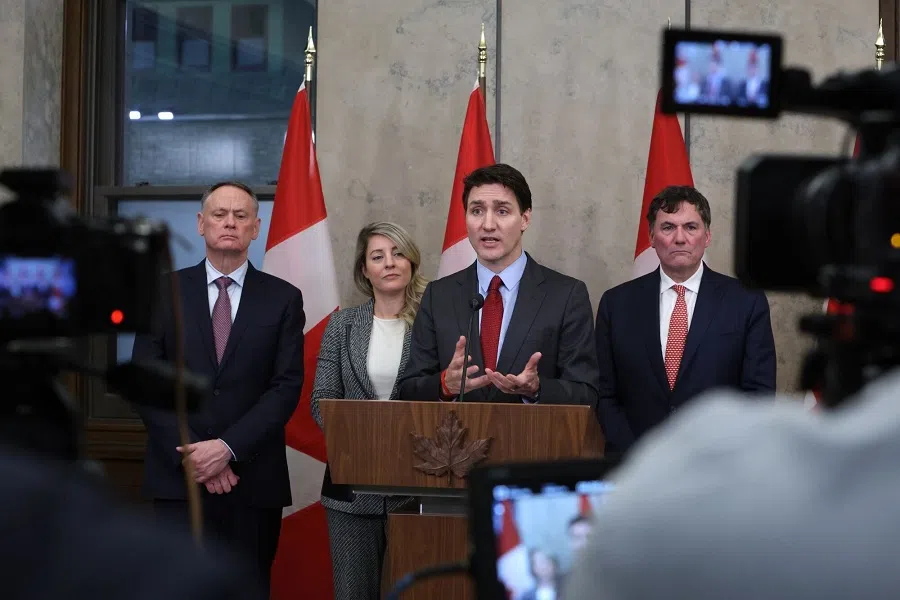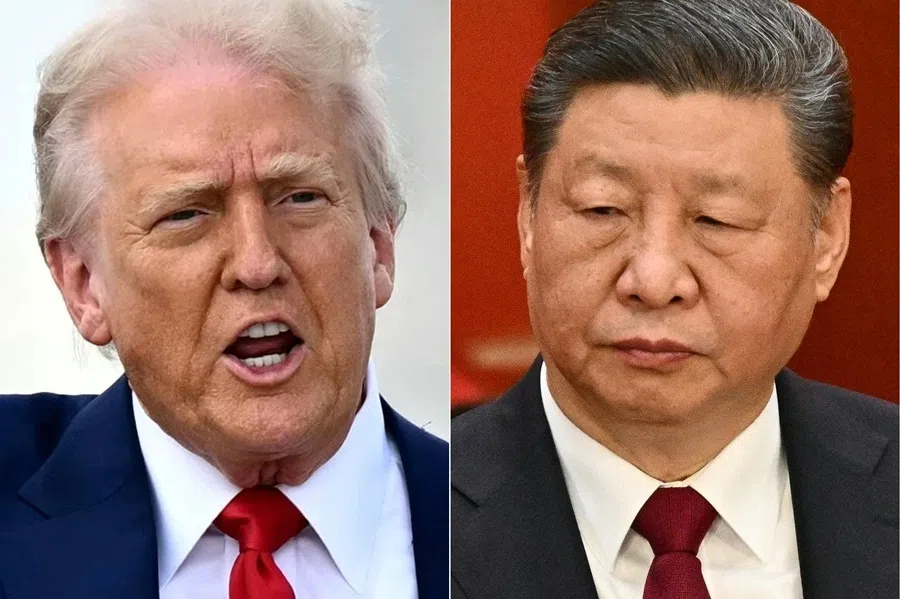Why China isn’t panicking over new US tariffs
While the impacts of US President Trump’s additional 10% tariffs on China still remain to be seen, East Asian Institute senior research fellow Bo Chen analyses that the situation may not be as bad as it was during the first US-China trade war.

On 1 February, the Trump administration announced a new round of 10% additional tariffs on Chinese products, citing issues related to fentanyl and illegal immigration. Given the existing penalty tariffs, the total US tariffs on Chinese products would amount to approximately 35%. Furthermore, during his election campaign, President Trump warned that tariffs on China could be as high as 60%, which would be considered a prohibitive level, as few products from China would be able to penetrate the US market in that scenario.
The market is concerned that “trade war 2.0” could break out soon, which would significantly impact China’s exports and its fragile economic recovery. In the following analysis, I will examine the effects of the new round of tariffs on China’s economy and explore China’s plausible reactions.
... exports account for about 21% of China’s economic growth in 2024, so an escalation in trade tensions with the US would exacerbate the already fragile growth.
Exports
The trade war initiated in 2018 caused China to lose its two-decade-long status as the top exporter to the US (surpassed by Mexico in 2023). However, the US remains China’s second-largest export destination, accounting for 16.4% of total exports in 2023. According to the Peterson Institute for International Economics (PIIE), a 10% tariff on US$420 billion of Chinese goods (i.e. China’s exports to the US) could reduce exports to the US by more than 8%. Of course, this estimation is based on the “current situation”, assuming no changes in exchange rates, retaliatory tariffs, corresponding monetary and fiscal policies, and so on.
Economic growth
China’s economic growth is likely to slow further. Based on available data from the Statistical Bureau of China, exports account for about 21% of China’s economic growth in 2024, so an escalation in trade tensions with the US would exacerbate the already fragile growth. PIIE estimates that the 10% additional tariffs could lead to a further decline in GDP growth of at least 0.3%.
Even with domestic stimulus policies, Goldman Sachs estimates that China’s GDP growth could drop to 4.5% in 2025, down from a 5% target for 2024. UBS’s report is even more pessimistic, predicting growth rates of 4% in 2025 and 3% in 2026 due to the anticipated impact of additional tariffs.

Unemployment pressure
Unemployment pressure is likely to increase. A potential trade war could force Chinese exporters and their upstream suppliers to either reduce production or relocate their manufacturing abroad, leading to job losses in the export sector. Without robust growth in the service sector to counterbalance this decline, China’s unemployment issues could worsen. UBS predicts that unemployment could rise to 5.4% in 2025 and 5.7% in 2026, up from the current rate of 5.3%.
... the US trade war with China resulted in a much more severe trade imbalance for the US. As a result, the additional tariffs could be temporary if successful negotiations occur.
Deflation risks
Deflation in China could become a significant concern. The country has already been experiencing persistent negative Producer Price Index (PPI) and near-zero Consumer Price Index (CPI) rates. The PPI has been negative since October 2022, while the CPI has remained below 1% since February 2023, despite a target of 2%. A potential trade war would likely exacerbate the overcapacity problem, further depressing both PPI and CPI.
Investment confidence and supply chains
Investment confidence and global supply chains would become more vulnerable. The trade war initiated during the first Trump administration has already caused substantial foreign direct investment (FDI) outflows from China due to concerns over supply chain stability. This outflow has contributed to a decline in overall investment confidence within China, affecting both foreign and domestic investors.

Of course, the above-mentioned impacts are still hypothetical, and the eventual effects hinge on several factors. First, President Trump is likely to use the threat of a trade war to negotiate deals that benefit the US and his supporters. After all, the trade war itself is a lose-lose scenario. According to the US Bureau of Economic Analysis, the US global trade deficit soared from US$5.8 trillion in 2018 to US$8.0 trillion in 2023. This indicates that the US trade war with China resulted in a much more severe trade imbalance for the US. As a result, the additional tariffs could be temporary if successful negotiations occur.
Second, the Chinese RMB might depreciate to partially offset the additional tariffs. During the US-China trade war, the average exchange rate of the RMB to USD was 6.62 in 2018 and 7.12 in 2024, reflecting a cumulative depreciation of 7.55%. Consequently, China’s exports to the US did not collapse during the trade war, but rather experienced a relatively mild reduction from US$ 5.58 trillion in 2018 to US$ 4.48 trillion in 2023. In fact, China’s exports to the US even reached a peak in 2022, amounting to US$ 5.63 trillion.
... given that China has already been experiencing the trade war with the US since 2018, such negative effects could be mitigated, to a large extent, by both the Chinese government and the market.
Third, China’s stimulus plan could be larger and more effective than expected, particularly in stabilising the housing market or boosting the consumption sector, potentially offsetting the negative impact of additional tariffs, at least to some extent. The Chinese government has begun to commit to greater stimulus plans since last September. Given the central government’s low debt level and the extremely low treasury rate currently, China appears to have sufficient space to implement its fiscal stimulus plan.
Domestic economy impacts may force the US to pull back
Fourth, the US economy is not entirely robust, and if domestic shocks occur (such as a persistent increase in CPI or a decrease in the stock market due to weaker firm performance), the US might not be as aggressive as it currently is.
One notable point for President Trump in the election is the inflation issue: it affects low-income families more than it does high-income ones. Therefore, even though the Biden administration has performed well in terms of economic growth, voters did not perceive it that way, as many of them have suffered more from inflation. Hence, President Trump cannot ignore the possible backlash caused by tariffs when they exacerbate US inflation.
Furthermore, characterised as a business CEO-like president, Trump is quite concerned about the performance of the stock market. If listed firms dampen their profit outlooks due to potential retaliations (not only from China but also from Canada and Mexico) and drag the stock market into recession, he might also be forced to seek a “truce”.

It is interesting that after President Trump announced his penalty tariffs against China, Canada and Mexico, China’s immediate reaction was to sue the US in the WTO. In comparison, both Canada and Mexico announced their retaliation measures instantly.
China’s relatively mild reaction might reflect two implications. First, tit-for-tat retaliation might not be a good strategy, given that it is not China’s intention to engage in the decoupling game with a US administration that is known to be hawkish. Second, the US motivation for additional tariffs on China might extend far beyond trade-related issues, and therefore, China might not want to simply respond with reactions in bilateral trade.
In summary, the additional tariffs would negatively impact China’s economic recovery. However, given that China has already been experiencing the trade war with the US since 2018, such negative effects could be mitigated, to a large extent, by both the Chinese government and the market. Thus, it is unlikely that the additional tariffs would lead to a China-US trade war 2.0, and the tariffs might not be as significant to China’s economy as they were in 2018.





![[Vox pop] Chinese parenting: Tough love or just tough?](https://cassette.sphdigital.com.sg/image/thinkchina/b95bd53631df26290df995775a40e36709bf8dc8e3759460276abd5c426b20b6)